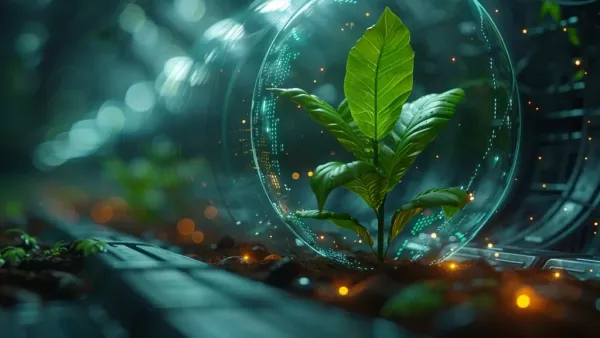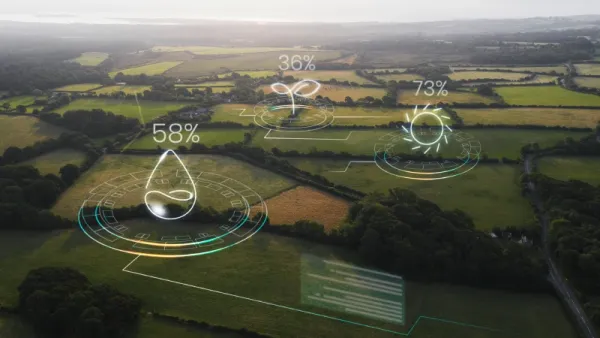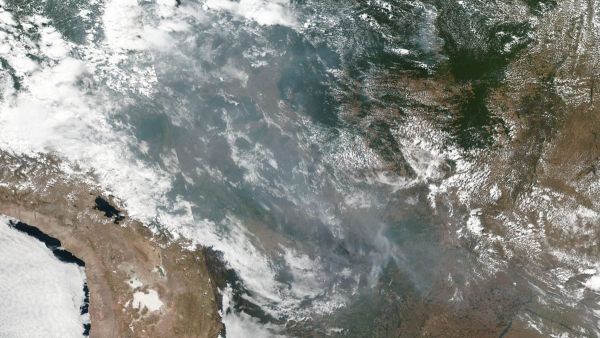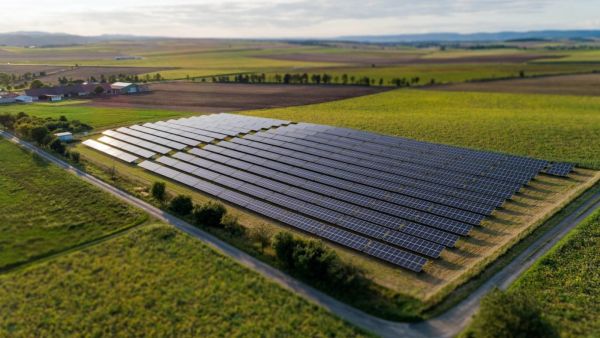
Forests are more than just trees. They are the lungs of the planet, homes to millions of species, and cultural anchors for communities that have lived among them for generations. Yet, in 2025, the scars of deforestation are everywhere: fire-blackened tracts in the Amazon, barren hillsides in Indonesia, and shrinking tree cover in Africa. According to the UN Food and Agriculture Organization (FAO), the world continues to lose 10 million hectares of forest each year, much of it to agriculture, logging, and development. These losses not only strip away biodiversity but also amplify humanity’s carbon footprint, accelerating climate change
But alongside this sobering reality, a new story is taking shape, one where technology is being harnessed to heal the Earth. From drones scattering seed pods over devastated land to AI predicting which seedlings will thrive to satellites tracking illegal logging in real time, technology is becoming an unlikely ally in the global effort to regrow forests. Reforestation is no longer only about planting saplings by hand; it is also about combining ancient wisdom with twenty-first-century technology and innovation.

One of the most striking images of Reforestation Technology is that of drones buzzing over degraded landscapes, releasing seeds into the soil below. These aerial reforesters can plant tens of thousands of seeds in a single day, covering areas too vast or treacherous for human planters.
Companies like Dendra Systems (UK) and Flash Forest (Canada) have pioneered drone seeding, combining aerial robotics with ecological expertise. Instead of scattering seeds blindly, these drones fire biodegradable seed pods designed to retain moisture and nutrients, dramatically increasing germination rates. In Myanmar, Dendra drones helped plant mangroves along coastlines, crucial for buffering against rising sea levels. In Canada, Flash Forest drones are replanting areas ravaged by wildfires, accelerating recovery in landscapes where climate change is fueling more frequent burns.
The appeal is obvious: drones are faster, cheaper, and can reach places humans cannot. But they are not replacements for human stewardship. Ecologists caution that drones work best as part of broader programs, where technology complements hands-on restoration and community involvement.

Artificial intelligence is quietly reshaping how we think about forests. By analyzing massive datasets, from soil quality and rainfall to species diversity and historical growth patterns, AI can predict where trees are most likely to thrive.
Take Restor, an online platform born out of ETH Zurich, which uses AI and satellite data to provide real-time insights into ecosystems. Restoration groups from Kenya to Peru use it to choose the right species, monitor survival rates, and adapt strategies. Similarly, AI models developed by Microsoft’s AI for Earth initiative help detect illegal logging, track reforestation progress, and assess the carbon captured by young forests. It assesses the carbon captured by young forests, assisting nations in reducing their overall carbon footprint while restoring ecosystems.
The value of AI lies in precision. Instead of planting trees where they are unlikely to survive, AI guides forest restoration efforts to maximize survival, biodiversity, and climate benefits. For countries committing to massive tree-planting campaigns, such as India’s pledge to restore 26 million hectares by 2030, this kind of data-driven planning is critical.
If drones are the hands and AI the brain, satellites are the eyes of the new Reforestation Technology. Orbiting hundreds of kilometers above Earth, they provide a bird’s-eye view of forests, detecting changes invisible from the ground.
The Global Forest Watch (run by the World Resources Institute) uses NASA and ESA satellite data to provide near-real-time alerts on deforestation. Governments, NGOs, and even local activists rely on these alerts to spot illegal logging or encroachment. A farmer in the Congo Basin, for example, can use the same tools as a policymaker in Washington to see how forests are changing.
In Brazil, satellites have been key to exposing illegal deforestation in the Amazon, pressuring authorities to act. In Indonesia, satellite imaging combined with AI helps track peatland fires, preventing small blazes from growing into catastrophic wildfires. Beyond monitoring, satellites also help measure the success of Reforestation Technology projects: how much canopy has regrown, how much carbon has been sequestered, and how ecosystems are recovering.

For all the promise, Reforestation Technology is not simply a technical challenge; it is a human one. Planting trees without considering local communities can lead to failed projects or even social harm. Past campaigns that focused only on numbers, boasting of “a billion trees have been planted,” have sometimes resulted in monoculture plantations that harm biodiversity and displace indigenous people.
The most successful projects recognize that technology must serve people as well as trees. In Kenya’s Green Belt Movementfounded by Nobel laureate Wangari Maathai, women’s groups use digital mapping tools alongside traditional knowledge to restore degraded land. In Nepal, community forests monitored with drones have not only regenerated ecosystems but also created jobs and income.
Technology provides speed and scale, but it is human stewardship that ensures forests are planted with care, protected from exploitation, and integrated into local livelihoods. Without this, reforestation risks becoming a fleeting spectacle rather than a durable solution.
Reforestation is not just about beauty or biodiversity; it is a pillar of climate strategy. Forests absorb about 2.6 billion tonnes of carbon dioxide annually, acting as one of the largest natural carbon sinks.

Yet the Intergovernmental Panel on Climate Change (IPCC) warns that forests alone cannot solve the climate crisis. They must work alongside emission cuts, renewable energy, and sustainable land use. By lowering the global carbon footprint, reforestation contributes to climate stability, but experts stress it must go hand in hand with emission cuts.
Still, the numbers are compelling. A study in “Science” suggested that global reforestation could capture up to approximately 200 gigatonnes of carbon, offsetting decades of emissions if managed carefully. While some scientists caution against oversimplifying such claims, the consensus is clear: restoring forests is one of the most effective and immediate tools we have for slowing climate change.
Technology magnifies this potential by ensuring forests are planted where they matter most and monitored so they endure. When combined with community-driven conservation, the results can be transformative.
To walk through a young forest, whether grown by hand or by drone, is to witness hope. Tiny saplings pushing through the soil remind us that nature, given the chance, heals.

Technology can give it that chance, accelerating the process, safeguarding the outcome, and helping humanity repay its debt to the planet. But forests are not algorithms, and Reforestation Technology is not simply an engineering project.
It is about restoring balance between people and the Earth. In 2025, as drones hum above burnt landscapes and satellites trace the green edges of regrowth, the challenge is to ensure these tools serve the larger story: one of dignity, responsibility, and renewal.
Because in the end, reforestation is not just about trees. It is about planting the possibility of a future where humans and nature thrive together.